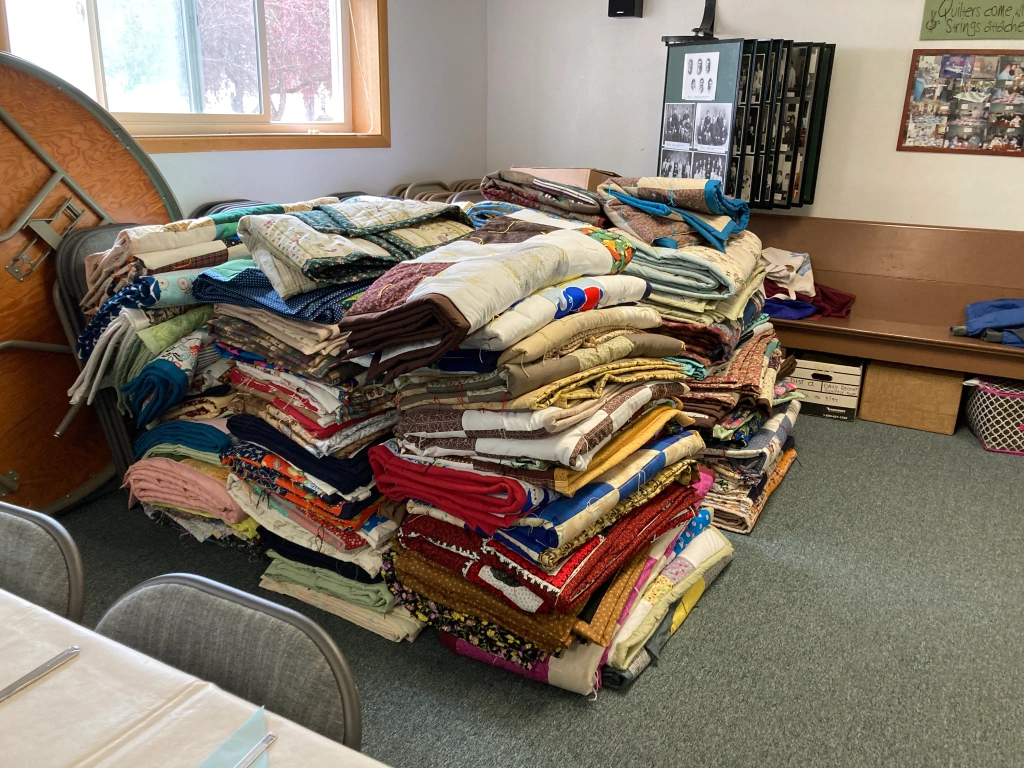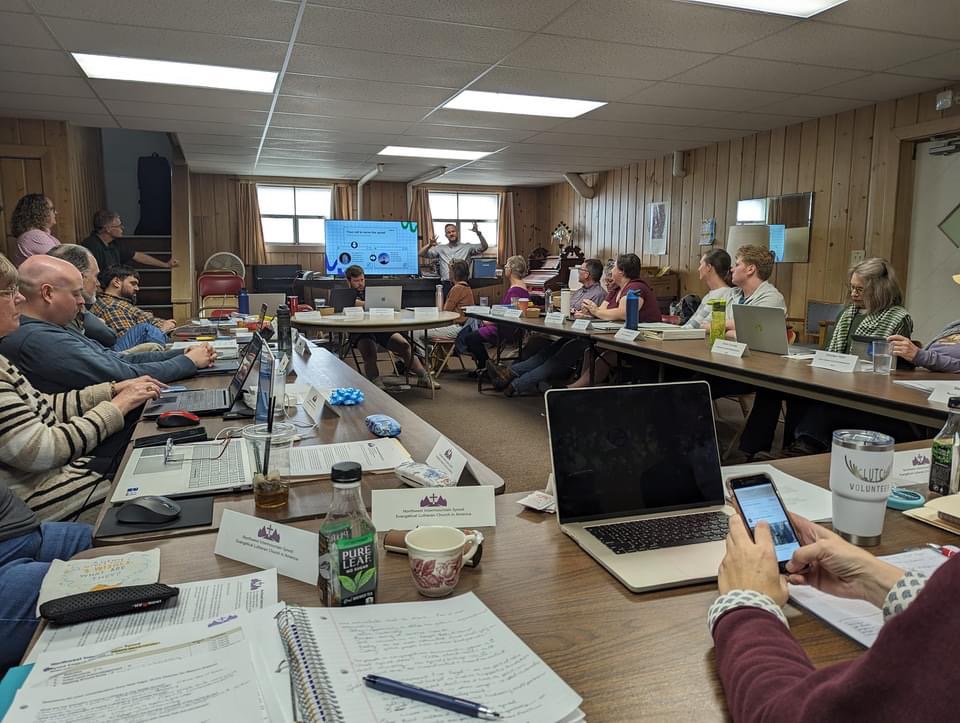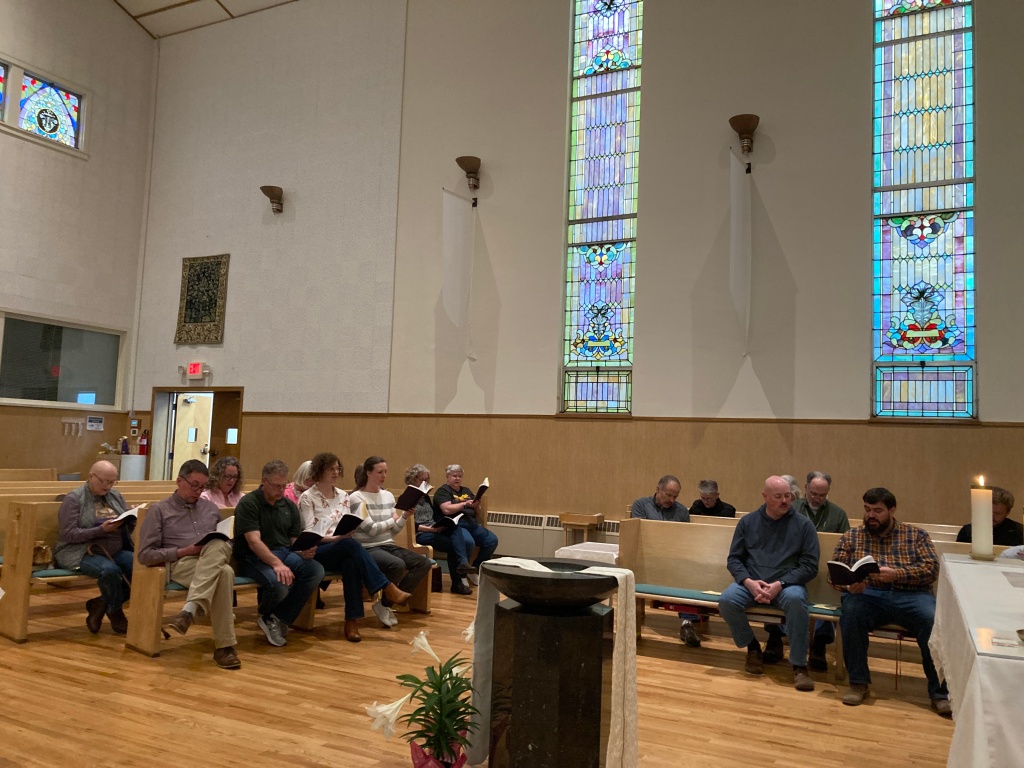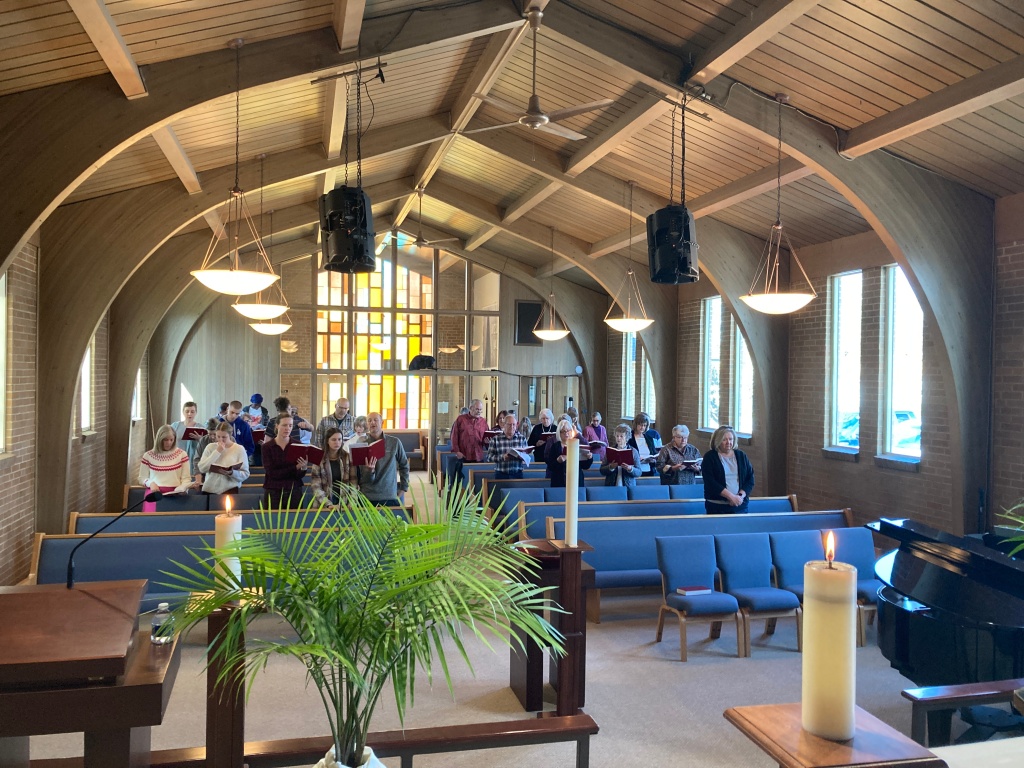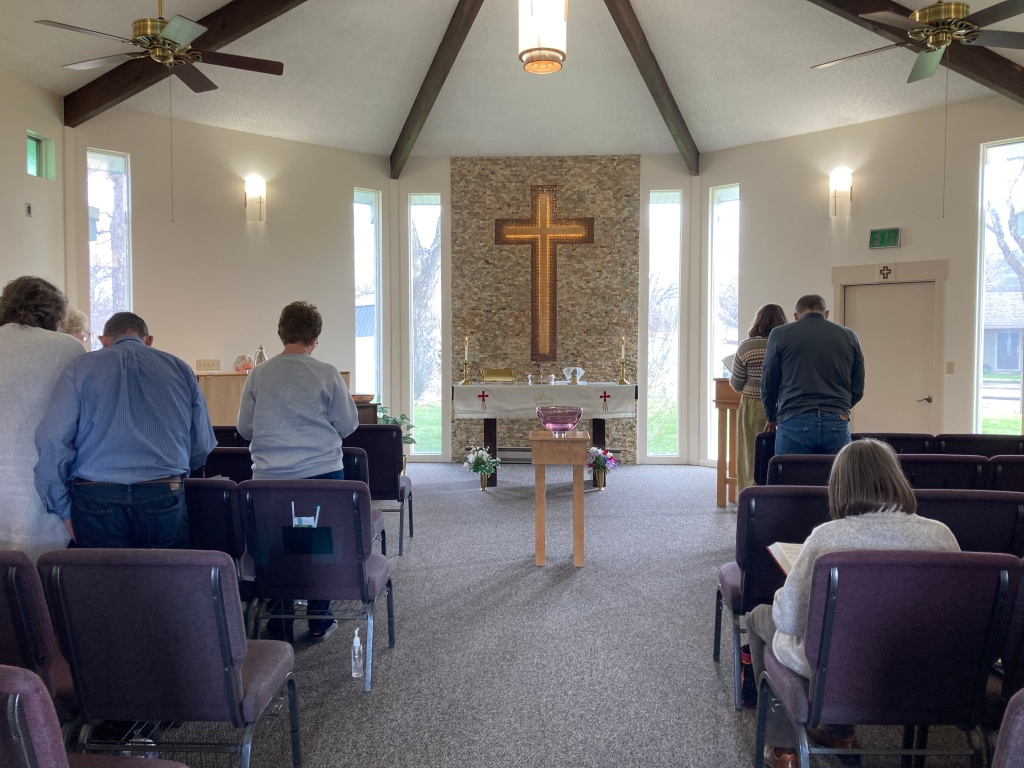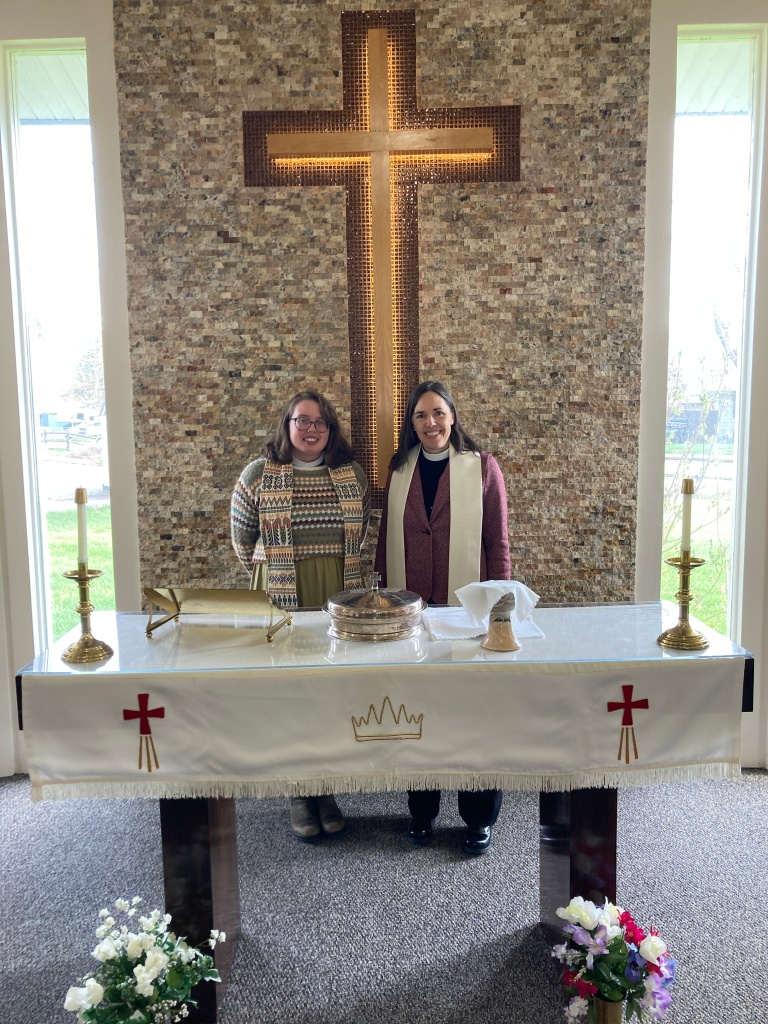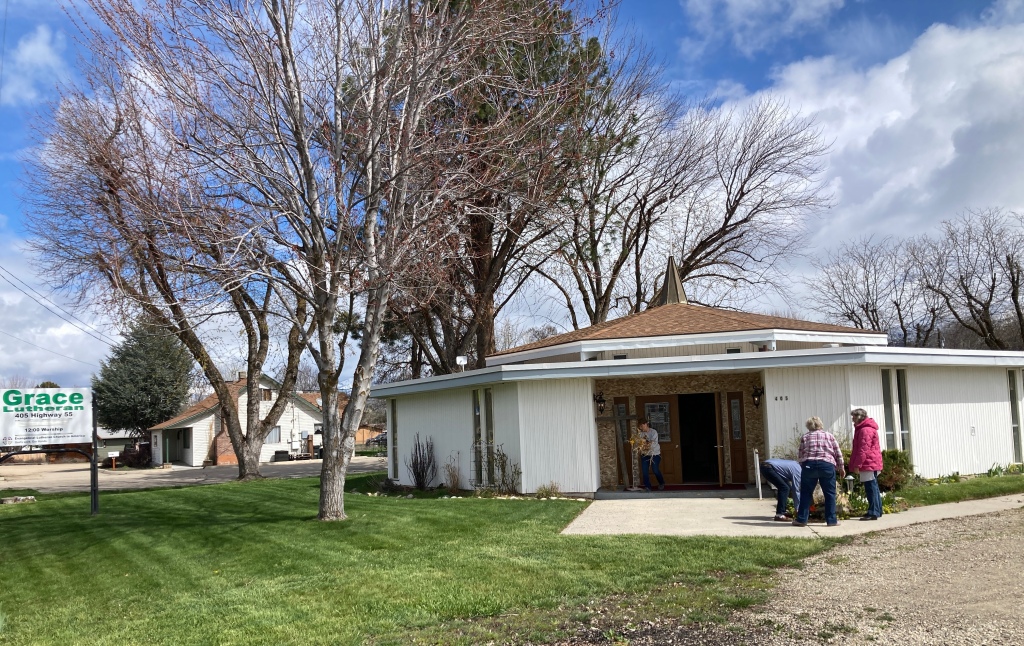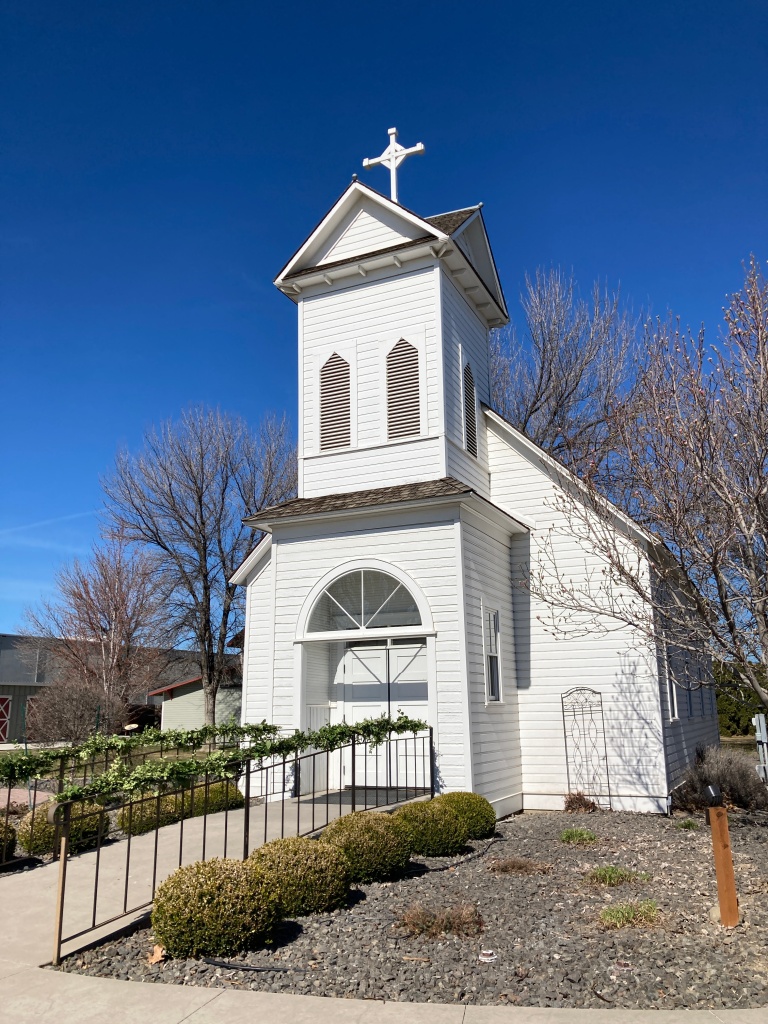Troy Lutheran, Troy, Idaho
John 15:1-8 (Vine and Branches)
Today’s gospel text, with its wonderful imagery of the vine and branches, poses challenging questions to the contemporary Christian community. It asks, what does it mean for the church to live as the branches of Christ the vine? What would “church” look like if we embraced this model for its corporate life? I am speaking of the whole church because Troy Lutheran is connected, through the vine and branches, to the cluster, local ecumenical partners, the Northwest Intermountain Synod, the ELCA, and the greater Christian Church.
The image of community that emerges from this imagery is one of interrelationship, mutuality, and indwelling. To get the full sense of this interrelationship, it is helpful to visualize what the branches of a vine actually look like. In a vine, branches are almost completely indistinguishable from one another. It is impossible to determine where one branch stops, and another branch starts. All run together as they grow out of the central vine.
What this vine image suggests about community is that there are no free-standing individuals in community, but branches who encircle one another completely. The fruitfulness of each individual branch depends on its relationship to the vine, nothing else. What matters is that each individual is rooted in Jesus and therefore gives up individual status to become one of many encircling branches.
The communal life envisioned in the vine metaphor raises a strong challenge to individual autonomy and privatism. The vine metaphor is counter cultural. At the heart of this model is interrelationship and corporate (or communal) accountability. The vine and branches exhort the community to steadfastness in its relationship to Jesus, a steadfastness that is measured by the community’s fruits. To bear fruit—to act in love—is a corporate act.
It is “rooted” in Jesus’ love for the community. To live as the branches of the vine is to belong to an organic unity shaped by the love of Jesus. The individual branch is subsumed into the communal work of bearing fruit, of living in love. In bearing fruit the branch reveals itself to be one of Jesus’ disciples.
To live according to this model, the church would be a community in which members are known for the acts of love that they do in common with all other members. It would not be a community built around individual accomplishments, choices, or rights, but around the corporate accountability to the abiding presence of Jesus. It would be a community built around the enactment of the love of God and Jesus. It would also be a community inextricably connected to other communities of faith, all bearing fruit.
The vine and branches also suggest a radically non-hierarchical model for the church. No branch has pride of place; no one branch can claim precedence or privilege over any other. “He cuts off every branch in me that bears no fruit, while ever branch that does bear fruit he prunes.” Fruitfulness is the only thing that distinguishes branches. And the discernment of fruitfulness falls to God the gardener alone, not to any of the branches.
It is the gardener’s role to prune and shape the vine to enhance fruitfulness. All branches are then the same before God, distinguishable only by their fruit. There is neither status nor rank among the branches. Hierarchy among the branches of the vine is precluded. All members grow out of the one central vine and are tended equally by the one gardener.
The vine and branches metaphor is stark in its anonymity. The visual image of the branches lack any and all distinctions in appearance, character, or gifts. The anonymity of this image is brought into sharp relief when compared with another metaphor, Paul’s metaphor of the church as the body of Christ.
First Corinthians Chapter 12 is irresistible in the anatomical fantasy it puts before the Corinthians: talking feet and ears, entire bodies composed exclusively of ears or eyes or noses. Unlike our metaphor this morning, Pauls’ image does not remove the differences among the various members of the body, but actually points to the differences as definitional of what it means to be a body. Each member is able to see the place that his or her individual gifts occupies in the corporate body. Paul holds together the oneness of Christ and the diversity of gifts and members in the body metaphor.
I think the Northwest Intermountain Synod has room for both metaphors. Ministries, congregations, and individuals bring unique God-given gifts to the whole. And we are all interconnected, grafted to the vine that is Jesus Christ.
What does this look like, really? Since our inception as a synod, we have supported three campus ministries: at Eastern Washington University in Cheney, at Wazoo in Pullman and University of Idaho in Moscow. ELCA Deacon Karla Newman-Smiley has been campus minister at University of Idaho for over twenty years.
For over twenty years, Karla has been showing up for students, faculty, and staff in Moscow, Idaho. She has again and again been a voice of welcome on that campus and in that community. She has continued to hone her skills, becoming a spiritual director, and she has participated in many campus committees and ecumenical endeavors.
In the fall of 2022, the University of Idaho campus was rocked in a way it had never been, when four students were murdered. Life for the campus had finally returned to normal after the pandemic academic years and suddenly there was this tragedy of four deaths. What’s more, there was deep fear and anxiety.
In the early hours of Monday, Nov. 14, the University of Idaho’s Office of the Dean of Students contacted various student ministries in an effort to provide counseling and other services to over 10,000 University of Idaho students. Karla noted in an interview that she found her “purpose to be supporting the Dean of Students and keeping The Center (formerly the Campus Christian Center) open as a space for students, faculty and staff, even though right now it feels like a suspended space.”
Fast forward past the Thanksgiving Break. On Dec. 1, the University of Idaho held a candle vigil for the community. A few university staff spoke, and members of the victims’ families shared words. One campus minister was invited to pray—ELCA Deacon Karla Newman-Smiley. Karla’s words led me to shed tears of hope in the God whose welcome is constant and steady, the God whose welcome never tires, never wavers.
I wish I could tell you the impact Karla’s prayer had on the students and families but it would only be conjecture. But what I want to say is to you today is thank you for being part of the Lutheran Campus Ministry story in this synod. Thank you for supporting a deacon who has welcomed people into various spaces for over twenty years.
It should not surprise any of us that Karla was then invited and welcomed to offer words of prayer when tragedy struck. She, like you and me, is a theologian of the cross. She was able to name in truthful, loving, accessible language that the God of Jesus Christ is in the hidden, unexpected, and broken spaces of life, like Moscow, Idaho in the fall of 2022.
Karla and Lutheran Campus Ministry of University of Idaho bore fruit through their individual gifts. And at the same time, they were the branches of the vine so connected to the love of God in Jesus Christ. The mark of the faithful community is how it loves, not who are its members. There is only one gift, to bear fruit, and any branch can do that if it remains with Jesus. Through campus ministry, our entire synod was able to love deeply those most in need.
Last November I was not in Moscow but across the globe in our companion synod in the southern part of Tanzania. This companion synod goes back at least thirty years and people we met remembered many visitors from our synod and some told stories of coming here. This is called accompaniment—the recognition that we have as much to learn and receive from our companion synod relationship than we have to give. We use the Swahili phrase, bega kwa bega, translated shoulder to shoulder. This metaphor has similarities to the intertwined branches coming out of the vine. Everytime we gather with our siblings from the Ulanga Kilombero Diocese, we remember that we are all connected to the branch that is our Lord Jesus Christ, the author of life.
The metaphor of the vine and branches reminds you that the most important gift, the equalizing gift, the vocation that we all share is to continue to bear fruit wherever you go. I often name campus ministry and the relationships with the Ulanga Kilombero Diocese, but the truth is that every congregation in our synod is fruit-bearing branch. To gather around the Word and Sacraments and offer those gifts for the world is an act of love. And all of our congregations are finding old and new ways to extend that love beyond their walls. What’s more, when you doubt, when you do not bear fruit, the vine gardener, full of limitless grace, will wait patiently for you to return to the vine to bear fruit for the community of believers and for the world.








